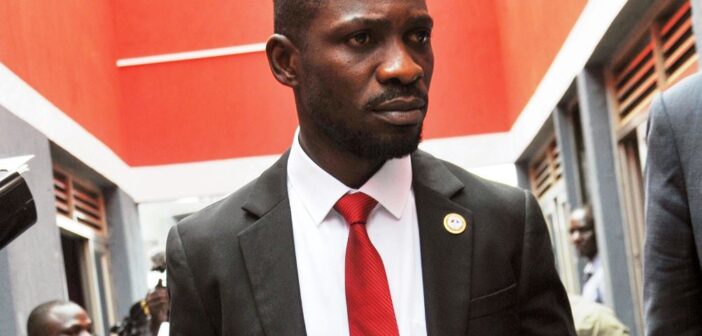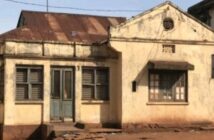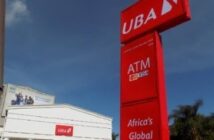By Andrew Mwenda
Kampala: Uganda’s leading opposition figure, Robert Kyagulanyi, hereinafter referred to by his stage name, Bobi Wine, is a disaster of unmitigated proportions. He claims to be opposed to the East African Crude Oil Pipeline (EACOP).
I wonder whether he even knows what this project is about and the length to which the governments of Uganda and Tanzania and the International Oil Companies (IOCs) went to ensure that all social and environmental issues pertaining to this project are addressed. For a person who aspires to lead Uganda, Bobi Wine comes across as not just ignorant and reckless, but also dangerously subversive to Uganda’s interests.
Bobi Wine and that army of emotional desperados who rally around him have legitimate grievances against the government of President Yoweri Museveni. Many of them have been unfairly and unjustly jailed without trial, tortured in illegal detention facilities and killed. Sometimes their only crime has been to voice opposition to the government.
I feel their pain and stand with them on those grievances. However, to use these grievances to join forces with foreign groups hostile to our vital national interests is unforgivable. Museveni is a transient figure in Uganda’s politics and the clock is ticking towards the evening of his stay. But Uganda will stay here forever.
Here are the facts about Uganda’s oil sector, which I think Museveni and his government, have handled well. Government has gone to great length to ensure that the exploitation of Uganda’s oil meets the best international environmental, legal and social standards. We have two oil areas. Tilenga is the northern field between Nwoya and Buliisa districts. They have two blocks which will produce most of the crude oil, about 190,000 barrels per day.
The key assets are a) the wells that will produce the crude and b) the central processing facility that will clean up the crude by separating water, gas and other impurities like mud. Once cleaned it is put in c) a pipeline that will transport it from the fields to Hoima. The idea is that all the crude will be gathered in Hoima and the EACOP will begin from there. Then there is a Kingfisher, which is in the southern fields and the process is the same as above.
For each of these facilities, detailed Environmental and Social Impact Assessment (ESIA) was done. The ESIA looks at the environmental impacts that the project will cause. Once the impact is identified, you seek to avoid certain impacts and those that cannot be avoided you work to mitigate. For instance, some of the wells in Tilenga are in the national park where wild animals reside. When drilling a rig, it makes a lot of noise. To mitigate this, government and IOCs will bring in a silent rig that will drill without noise.
The ESIA report is then taken to the district for its officials, civil society and academia to see the avoidance and mitigation measures agreed on and make comments. Then public hearings are held and people come and make their contribution. Once this information is gathered, the report is improved and submitted to NEMA. Then their experts study the report, make comments and sit with IOCs and UNOC representing government and negotiate the final changes to make to the documents. It is after this that NEMA approves the document and gives you a certificate that you begin implement the ESIA.
Then in come the financing institutions – these include export credit agencies, development finance institutions, commercial banks and insurance companies. These are sensitive to environmental and social issues. Especially banks want to avoid risks. They send their experts – independent auditors in the field who audit the resettlement action plan, the legal regime, the technical design of the production and processing facilities etc. In Uganda’s case, these found Uganda’s ESIAs to be among the best in the world and the projects passed on all aspects. For EACOP, the project is oversubscribed by financiers at 120% – proof that Uganda has done an excellent job.
The law that Uganda has deals with carbon emissions from the project. Uganda has a law that bans flaring. When you produce crude oil, it comes with, among other things, gas. If you separate gas, you must find something to do with it. In many countries, they just burn it (flaring). But this emits a lot of carbon. Uganda decided not to burn the gas but will convert it into Liquified Petroleum Gas (LPG) and Uganda will be producing 100,000 metric tons per year. Currently, the consumption of LPG in Uganda today is only 25,000 tons per year.
The pipeline will need to be heated. Initially the plan was to use crude to heat the pipeline. This would generate a lot of carbon. It was decided to build four solar farms to generate electricity for 80% of the pipeline. The other 20% will be heated by power imported from the Ugandan grid, which is 80% hydro. UNOC will plant 40 million trees which is aimed at offsetting the carbon that the project will generate that will not have been offset by the clean energy. Total is also planting 100,000 trees. Effectively the project will be almost as carbon neutral as it can get. This has lasted years.
The resettlement plan has also been audited and approved by experts and found to meet international standards. Once the route was identified, governments of Uganda and Tanzania and IOCs went and met with all those people to be affected by the project. In terms of numbers (Uganda side), there are 3,648 project affected persons in the ten districts. Of these, only 4% are going to be required to be relocated, and these can choose to be given cash compensation or have a new home built for them.
For those who have chosen cash compensation, every district has a committee that independently establishes the rates for their assets – house, trees, crops etc. This is on top of the value of the land. The chief government valuer supervises this process and ensures that values are harmonised across the districts. After this, the government hired Centenary Bank to go to the villages to do financial literacy training. People were trained, they opened bank accounts and compensation is now at 60%. Government has also added a disturbance allowance of 30%. And for most of the project affected persons, government has added a 15% uplift allowance for delays. This same process was also conducted in Tanzania where it was easier because their land tenure system is simpler. So what exactly is Bobi Wine’s concern?
Story Credit: amwenda@independent.co.ug



